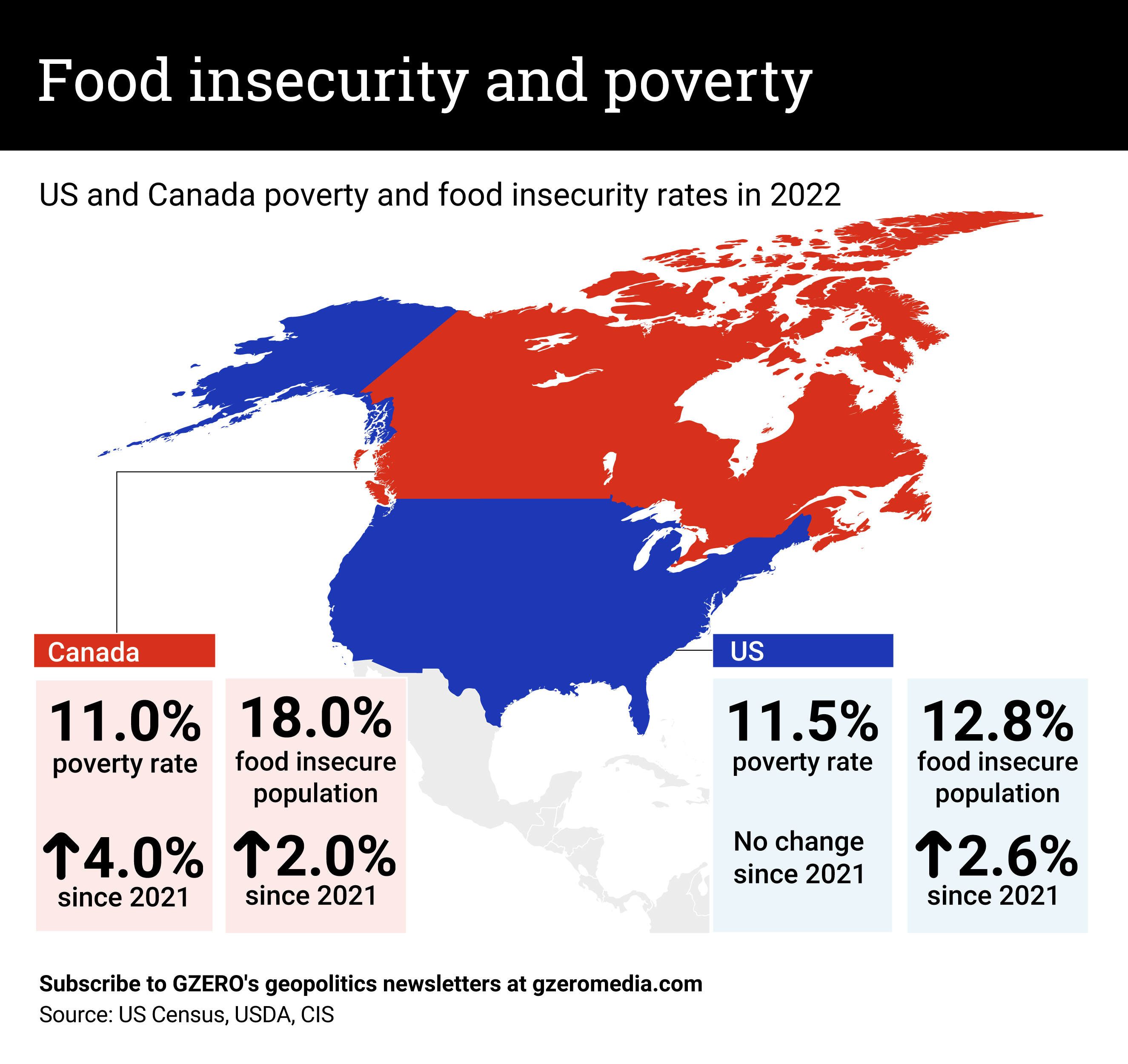November 30, 2023
Poverty and food insecurity, exacerbated by COVID and the soaring cost of living, plague both the US and Canada. At the height of the pandemic, school closures in the US deprived many children of their vital food source: free school lunches. This, coupled with job losses and inflation, plunged many into food insecurity. The economic outlook has still not improved for these families, thanks to the high rate of inflation, which is keeping grocery and gas prices elevated.
In Canada, a cost-of-living crisis has seen demand for food banks surge, with the 2023 Hunger Count by Food Banks Canada revealing a 32% rise in year-on-year visits in 2022. Parents made up the largest share of food bank users. Like in the US, they are grappling with exorbitant housing, food, and fuel costs, compounded by childcare expenses. A record 1.9 million Canadians sought assistance from food banks in just March 2023 alone.
How has US food insecurity increased, but not poverty? The poverty line, defined by Lyndon B. Johnson in 1963, hasn't been reassessed since. Back then, poverty was defined as anyone spending a third of their income on a “bare essentials diet.” But thanks to globalization and agricultural advances, an average American now spends only one-eighth of their income on food.
Instead, housing and childcare are the biggest budget busters. An American renter making $30,000 likely allocates over half their income to housing and may struggle with food insecurity. But, given the 1960s “poverty” guidelines, they need to earn nearly three times less, or $12,880, to be considered poor.More For You
Mastercard Economic Institute's Outlook 2026 explores the forces redefining global business. Tariffs, technology, and transformation define an adaptive economy for the year ahead. Expect moderate growth amid easing inflation, evolving fiscal policies, and rapid AI adoption, driving productivity. Digital transformation for SMEs and shifts in trade and consumer behavior will shape strategies worldwide. Stay ahead with insights to help navigate complexity and seize emerging opportunities. Learn more here.
Most Popular
- YouTube
Despite a ceasefire in Gaza, Israel is still not letting foreign journalists in to independently verify what’s happening on the ground, CNN’s Clarissa Ward tells Ian Bremmer on GZERO World.
- YouTube
On Ask Ian, Ian Bremmer breaks down the steady escalation of US pressure on Venezuela and why direct military action is now a real possibility.
US President Donald Trump arrives to announce reciprocal tariffs against US trading partners in the Rose Garden of the White House in Washington, DC, USA, on April 2, 2025.
POOL via CNP/INSTARimages.com
From civil conflicts to trade wars to the rise of new technologies, GZERO runs through the stories that have shaped this year in geopolitics.
© 2025 GZERO Media. All Rights Reserved | A Eurasia Group media company.
